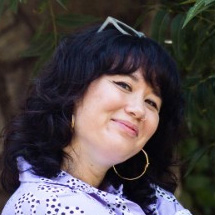Robert Rose remembers a time before content marketing was a field you could work in.
The year was 2008, and Robert — who was the CMO of a software company — was attending a conference called Web 2.0. “This was a very fancy concept back then!” he recalls.
He spotted Joe Pulizzi’s name on the speaker lineup. Robert was already familiar with Joe’s work. In fact, Joe’s first book, “Get Content Get Customers,” in which he coined the term “content marketing,” influenced Robert to proactively buy the domain contentmarketing.com.
“To my great dismay, I registered the domain under the company I worked for rather than myself,” Robert says. “Big mistake!”
At the conference, Robert approached Joe and shared that story with him. The duo hit it off instantly, and Joe invited Robert to join Content Marketing Institute as the fractional Chief Strategy Advisor, a position Robert still holds. (The two also continue to host a podcast together.)
In 2016, Robert launched The Content Advisory, where he still serves as Chief Strategy Officer. He also still consults as a fractional marketing leader, offering strategic advice and helping clients balance the art and science of marketing.
“Some Marketing Is Immeasurable”
Robert has found that most companies try to reduce marketing to a science and don’t understand the artistic balance a successful marketing effort requires.
“Marketing is a pretty new function,” Robert points out, “having only been around for the last 100 years. People constantly focus on the science: How do I get the algorithm right? How do I know exactly how much money I’ll get based on what I’ve spent?”
That level of precision has always eluded us. Marketing is a balance of art and science, and some of that is — and always will be — immeasurable and unpredictable.
“The artistic part is literally emotional, contextual and creative. It will ultimately be something that resonates or doesn’t,” Robert emphasizes. “It’s based on so many fundamental things that you can’t ever scientifically predict it.”
The key is to balance both. Art and science don’t have to be in tension with each other, but they should round each other out. High-performing companies like Apple and Nike know this — they’re rigorous in their messaging creation and scientific in where and how they place their media.
However, even established brands don’t always hit the mark…
We Don’t Need To Be Worthy of AI
You may remember some recent controversy about Google’s Gemini ad, which highlighted a father using the company’s chatbot to write a fan letter from his daughter to a U.S. Olympian. The backlash was instant, with people questioning why this particular experience would need to be outsourced to AI.
Robert has noticed many large AI companies struggling to market their technology in relatable ways. Instead of allowing product users to become the hero, these brands are engaging in solutionism — the belief that every problem can be solved with technology — and making the product the star of the show.
“It’s a classic marketing mistake,” Robert says. “It’s interesting that it’s happening in 2024 with so much information about what good marketing looks like out there. They’re trying to make people feel like they have to be worthy of the technology, rather than letting us use the tech to become the heroes of our own stories.”
From a solutionist POV, everything is a problem waiting to be solved by technology. Yet, as the ad response showed, creativity is not one such problem.
As Robert asks, “Does it make the human condition better if we make the process of creativity more efficient?” Do we want AI to write a letter for a child instead of letting the kid express their creativity and grow through that very friction-filled experience?
Probably not. Rather, we want to learn how AI can help us. We want to see the value of real-world applications so we can move past our uncertainty and put it to good use.
Using AI for “Constructed Content” and AI Adoption
In his own work, Robert uses generative AI for a specific type of content.
“I separate content into two categories,” Robert explains. “This comes from a critique that G. K. Chesterton wrote about Charles Dickens’ work. He first spoke about created content, which is loved before it’s expressed by the author.”
In other words, every novel, poem, song, painting or other work of art falls into the “created content’ category because it was loved before anyone else saw it or before its creator even expressed it.
The second category is “constructed content,” which can only be loved after it is expressed.
“Constructed content can be amazing, impactful and valuable, but it still can’t be loved until it’s expressed. Think of the product user manual, the law, or a stop sign as examples.”
Robert uses AI for constructed content only — webinar abstracts, book abstracts or a meeting summary. Using AI with this type of output saves him time, helps him organize his thoughts, and notifies him of patterns in his thinking. All of that is tremendously helpful.
“However, AI is not helpful at all for me in coming up with ideas that I love and want to express myself. It’s not that AI can’t do it. It’s that I desire to go through that process as a function of my growth as a human. That’s how I think about it, and it’s what I teach my clients as well.”
When he works with clients to prepare for AI adoption, Robert underscores the importance of having a clear strategy in place. He frequently sees teams collecting info on myriad use cases for how AI can help, but that’s not the right place to start.
Instead of compiling 500 use cases for how generative AI might help you, start with an audit of your actual marketing workflow. How do you currently manage and create content? Mapping that out can help you identify the gaps where AI might make sense for you.
“Then, we can start putting together functional requirements,” Robert states, “and we can select a technology that fulfills those to improve the marketing and prioritize the right use cases. We’ve done this a couple of times now for companies, and it’s really helped them make pragmatic, practical progress toward making AI work better.”






